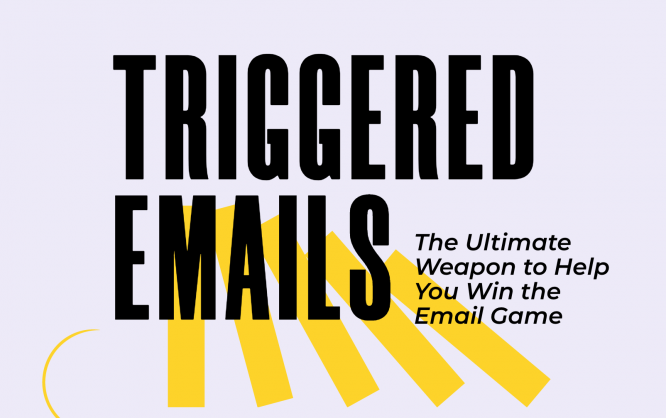A Concise Account on Triggered Emails to Create a Winning Marketing Strategy – [Infographic]

With constantly overflowing emails in the subscribers’ inboxes, it is imperative to send out personalized emails that are exclusively targeted to the subscribers. This will also help you to boost your subscriber engagement and bring a higher conversion rate.
One of the most effective ways to ensure the effectiveness of your emails is to send out triggered emails that are well aligned with the customer’s past interactions and purchases.
Defining Triggered Email
A triggered email is a scheduled email that is sent automatically to a user in response to a certain behavior or action that they take.
You just have to predefine the trigger events and as soon as the user will meet the conditions, they will receive a triggered email.
These emails will help you achieve the marketing trifecta of sending the right message at the right time to the right person.
Take a look at these statistics revealed in a study by GetResponse:

These figures are far more promising than that of newsletters and other autoresponders.
With that said, let’s take a look at how triggered emails can take your email marketing strategy to the next level.
Advantages of Triggered Emails
- Triggered emails are more relevant for the users. Therefore, they are much more likely to take action and convert.
- By sending out relevant product recommendations in post-purchase triggered emails, you can retain the subscribers and boost customer loyalty.
- As triggered emails are automated communications, you can do away with any manual intervention and focus on driving business growth.
- These emails will help you stay on top of the subscriber’s mind and build brand reputation.
Types of Triggered Emails
1. Welcome Emails
Whenever someone fills your sign-up form and hits the “Submit” button, you must send out a welcome email to introduce your brand to them.
Omnisend has reported that welcome emails brought nearly 12% of all email orders with a 52% conversion rate in the year 2020.
To make the most of these emails, you must send a series of three to five emails, sent over a week or fortnight.
2. Browse Abandonment Emails
Prospective clients or customers often browse through your website or online store but do not add anything to the cart. To engage with such users, you can send out browse abandonment emails.
Remind them about the things they were searching for and ask them if they need any help with the same. You can also use this opportunity to share some product recommendations to upsell and cross-sell.
3. Cart Abandonment Emails
In March 2020, 88.05% of online shopping carts were abandoned. That’s such a huge loss for eCommerce marketers. To recover this loss, you can send out cart abandonment emails that would work as a gentle nudge and bring the customer back to the store.
It is advisable to send a series of three reminder emails in your cart recovery strategy. Also, consider incentivizing the customers and creating a sense of urgency to generate instant conversions.
4. Re-engagement Emails
Rather than acquiring a new customer, it is a lot more cost-effective to retain an existing one. However, over time your customers might lose interest in your brand and move on to your competitors. To win these customers back, you must send out re-engagement email campaigns.
Send out interesting offers to revive these dormant leads. Remind them why they signed up and share exciting updates that they might have missed while they were away.
You can even share the link to the preference center and allow them to customize the settings.
If the users still do not show any engagement, let them unsubscribe and remove them from your email list.
Looking for more insights?
Email Uplers has created an insightful infographic around Triggered Emails and how it can be the most useful weapon in your arsenal.
Bonus: You will also get to download a free ebook with some inspiring email examples, along with the infographic.

